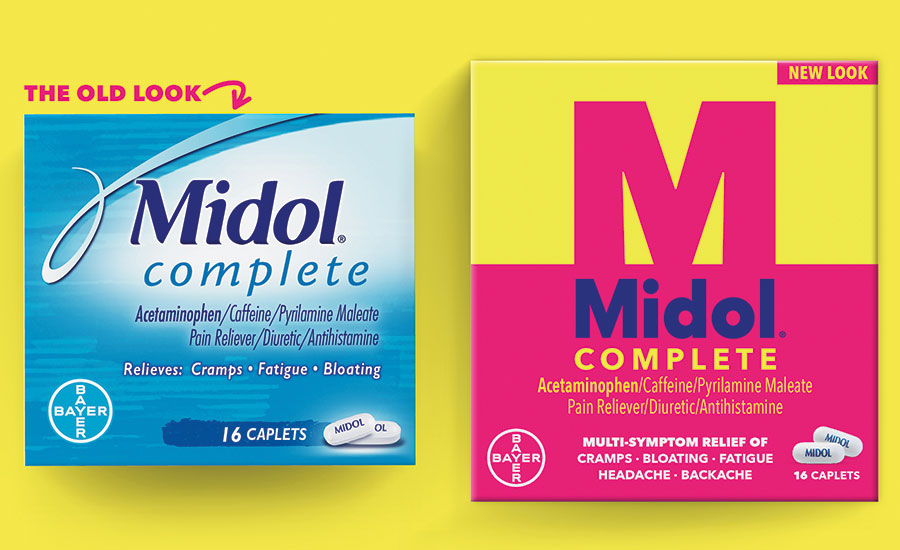The Ingredients: What’s in Midol
When it comes to managing menstrual symptoms, Midol has been a trusted companion for many. But have you ever wondered what’s in Midol that makes it so effective? In this article, we’ll dive deep into the composition of Midol, revealing the key ingredients that provide relief and clarity on how they work together. Let’s unravel the science behind Midol and empower you with knowledge for informed use.

The Ingredients of Midol
Midol’s effectiveness lies in its carefully crafted formula, combining active ingredients that target specific menstrual symptoms. Here’s a comprehensive look at what’s in Midol:
Acetaminophen:
Acetaminophen is a pain reliever and fever reducer commonly used to alleviate menstrual cramps and headaches.
Caffeine:
Caffeine acts as a mild diuretic and can help combat fatigue often associated with menstruation.
Pyrilamine Maleate:
Pyrilamine maleate is an antihistamine that can reduce bloating, water retention, and the severity of allergic reactions.
Purpose and Effects
Understanding the purpose of each ingredient is crucial to grasp the synergy within Midol. Here’s a breakdown of how these ingredients collaborate to provide relief:
Acetaminophen:
Acetaminophen reduces pain and discomfort associated with menstrual cramps by blocking pain signals.
Caffeine:
Caffeine’s diuretic effect helps alleviate bloating and reduce fluid retention.
Pyrilamine Maleate:
Pyrilamine maleate targets symptoms like bloating and discomfort caused by histamine release.
Safety and Side Effects
While Midol can be effective in managing menstrual symptoms, it’s essential to use it responsibly. Here, we address safety considerations and potential side effects associated with the ingredients:
Acetaminophen Safety:
Acetaminophen is generally safe when used as directed.
Highlight the importance of following dosage instructions to prevent accidental overdose.
Caffeine Awareness:
Discuss the caffeine content in Midol and the importance of moderation.
Advise readers to be cautious if they are sensitive to caffeine or have certain medical conditions.
Pyrilamine Maleate Precautions:
Mention that pyrilamine maleate may cause drowsiness in some individuals.
Encourage users to be aware of their reactions and avoid activities requiring alertness if drowsiness occurs.
Alternative Solutions
While Midol is a popular choice, it’s essential to know that there are alternative remedies and medications available. In this section, we explore other solutions and when they might be suitable:
Natural Remedies:
Discuss natural remedies like heat therapy, herbal teas, and dietary changes that can complement or replace Midol.
Emphasize the benefits of these alternatives for those seeking drug-free options.
Over-the-Counter (OTC) Alternatives:
Mention other OTC medications specifically designed for menstrual symptom relief.
Provide a brief comparison of their ingredients and potential advantages.
User Experiences
User experiences provide valuable insights into the effectiveness of Midol. In this section, we share real testimonials to offer a balanced perspective:
Positive Testimonials:
Share excerpts from users who have found relief and comfort using Midol.
Highlight specific symptoms it effectively addresses.
Constructive Feedback:
Acknowledge that Midol may not work the same for everyone.
Share feedback from users who have experienced side effects or found it less effective.
Frequently Asked Questions
Q1: Is it safe to take Midol with other medications?
A: Midol may interact with certain medications, so it’s essential to consult a healthcare professional if you’re taking other drugs.
Q2: Can I take Midol on an empty stomach?
A: While it’s generally safe, taking Midol with a small meal or snack can help prevent stomach discomfort.
Q3: How long does it take for Midol to work?
A: Midol typically starts providing relief within 30 minutes to an hour after ingestion.
Q4: Can men use Midol?
A: While Midol is marketed for menstrual symptom relief, men can use it for pain relief as well.
Q5: Are there any age restrictions for Midol use?
A: Midol is typically safe for adults and teenagers. Consult a healthcare provider for children under 12.
Q6: Does Midol contain any allergens?
A: Midol may contain inactive ingredients that can trigger allergies in some individuals. Check the packaging for allergen information.
Q7: Can I take Midol if I’m pregnant or breastfeeding?
A: Pregnant or breastfeeding individuals should consult a healthcare provider before using Midol.
Q8: Is Midol available in different formulations?
A: Midol offers various formulations targeting specific symptoms, such as menstrual cramps or bloating.
Q9: Can I use Midol for conditions other than menstrual symptoms?
A: Midol is primarily designed for menstrual symptom relief. Consult a healthcare provider for other conditions.
Q10: How often can I take Midol?
A: Follow the dosing instructions on the packaging or as advised by a healthcare professional. Avoid exceeding the recommended dose.
Conclusion
In conclusion, understanding what’s in Midol is essential for making informed choices about managing menstrual symptoms. We’ve delved into the ingredients of Midol, and how they work together to provide relief, safety considerations, and alternative solutions.
While Midol can be a valuable tool in your toolkit for managing discomfort during your menstrual cycle, it’s crucial to use it responsibly and be aware of potential side effects. Remember that individual experiences may vary, and what works best for one person may differ from another.




